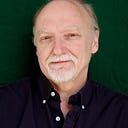Let Us Now Praise James Agee, on Hiroshima
In the months after the twin atomic attacks on two Japanese cities, which killed upwards of 200,000 civilians, Hollywood pushed forward with its first cinematic treatment, The Beginning or the End, soon to be heavily revised under orders from the White House and the military. Columnists and commentators weighed in on the implications of the atomic era almost daily, but the subject appeared too unsettled and complex for American novelists. There were no reports of any even attempting to take a crack at it. What happened to Hiroshima and Nagasaki may have been impossible to imagine, let alone render. One recalls Whitman’s comment on the Civil War: “The real war will never get into the books.”
A writer best known for his non-fiction did take up the challenge, but even he had to do it in a shorter, satirical form. James Agee, only thirty-five years-old but already fearing he was a has-been, had raised questions about the making and use of the bomb in the pages of his main outlet, Time magazine, where he made his name as a film critic and all-purpose scribe. (His book with photographer Walker Evans, Let Us Now Praise Famous Men, had flopped.) As an American, Agee felt personally implicated in the killing of thousands of civilians. He considered development of the bomb “the worst thing that’s ever happened — so far” and Hiroshima “the only thing much worth writing or thinking about.”
His response in fiction was a bizarre fantasy called “Dedication Day.” He considered it a kind of “rough sketch” for a motion picture (he had long wanted to break into movies), but first he submitted it as a short story to Politics magazine, edited by one of the prominent critics of the decision to drop the bomb, Dwight MacDonald.
It depicted a postwar celebration of the bomb featuring a great arch, made of fused uranium, designed by Frank Lloyd Wright. General Leslie Groves, head of the bomb program for the Manhattan Project, attends and the ceremony is broadcast in the first national television hook-up. But during this event a bugler, assigned to blow “Reveille,” instead plays “Taps.” It seems that one of the scientists who worked on the bomb has gone “a little queer in the head.” He insists on joining a group of badly injured survivors of “the experiments of Hiroshima and Nagasaki” who had been “forgiven” by the Americans and therefore enlisted in a key project connected to the memorial.. Attendees view him in agony, tearing at his hair, working alongside the survivors, as he mockingly flashed the V for Victory sign to the tourists.
Later, out of sight, the scientist commits suicide, with a note pinned to his coat calling this “obligatory,” an ethical “sacrifice.” This, of course, somewhat marred “the intended dignity, charm and decorum” of the celebratory event.
The scientist is then buried with full honors at…the Trinity test site, where speakers warn that this is what happens to those who make “the grievous error of exaggerated scrupulousness.” Clergymen and philosophers embark on a campaign of “controlled ridicule.” Along the way, Agee skewered every facet of American life: government, business, advertising, religion, science, psychiatry, modern art, and public opinion. Any attempt to atone for Hiroshima will be viewed as evidence of madness, he warned.
Agee hardly stopped there, however. He penned mocking reviews of that pro-bomb MGM film, The Beginning or the End (the subject of my new book), for both Time and The Nation. He remained obsessed with the subject, making plans to write a non-fiction book on the effects of the bomb. He even aimed to collaborate with Charles Chaplin — he was one of the few U.S. critics to champion his current film, Monseour Verdoux — on a fruitless movie project, titled Scientists and Tramp, that would inject the star’s most famous character into a post-nuclear holocaust.
Agee wanted the Little Tramp to roam the world asking scientists to abandon their “genius with gadgetry” and all of their lethal projects, to no avail, leaving him in the end utterly alone. With his rare artistic and journalistic obsession with this subject, Agee must have felt much akin to Chaplin in this scenario.
Greg Mitchell’s latest book, his eleventh, is The Beginning or the End: How Hollywood — and America — Learned to Stop Worrying and Love the Bomb (The New Press). It has been selected by Vanity Fair as one of the “20 Best Books of 2020.”
